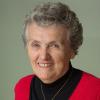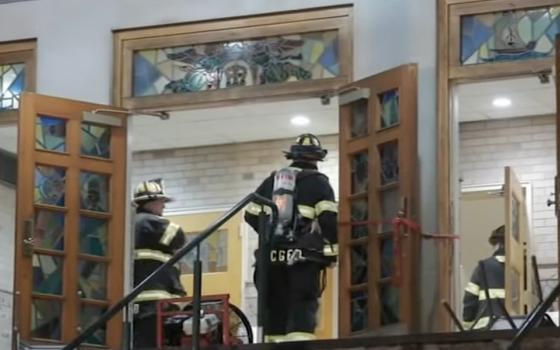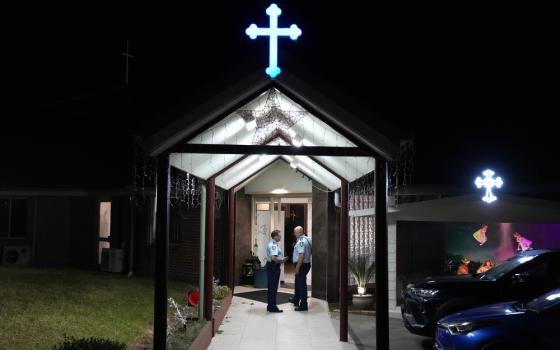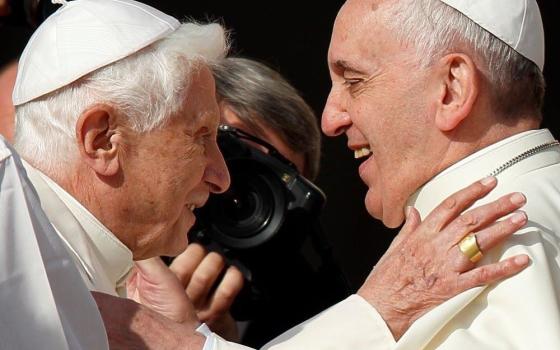It's been quite a two weeks: first there was the Asia Pacific Women, Faith and Development Summit to End Global Poverty in Melbourne, Austraila, Dec. 2-3; then the Parliament of the World's Religions, also in Melbourne through Dec. 9, and now the trip from Melbourne to Copenhagen, Denmark for the U.N. conference on climate change.
The whole collection of events is a life-changing one. It’s like standing on the top of a global mountain and watching the caravan of a whole new world just topping the horizon at the end of a far-away road. I’ll tell you a little about all of them -- what they’re about and what I think they mean to us -- however faraway they may seem on a busy day in small town USA.
Entry One
The Asia Pacific Women, Faith and Development Summit to End Global Poverty is called “Breakthrough.” And it well may be. Thanks to the impetus gained from a summit of women’s groups at Washington National Cathedral last year, women in Australia set out on their own to focus on women’s issues in Australia and the island nations in the region. But they went about it in a very new way.
While an entire generation of women and men in the United States seem to think that the woman’s movement, that feminism, is over, another whole world full of women of all ages know that it is barely started. Otherwise, how to account for the fact that two-thirds of the hungry of the world are women, that two-thirds of the illiterate of the world are women, that two-thirds of the poor of the world are women.
Obviously, given the number of development programs and foreign aid programs around the world, money is being given to someone for something. But obviously not to the needs and development of women. “Breakthrough,” the Asian-Pacific conference of women is setting out to change that.
The purpose of the Breakthrough conference was to bring together three groups of groups: women’s groups in the region; development programs with projects in the area and faith-based communities whose works are outreach programs of various denominations in the area. The point is that if these three groups concentrate on -- make a priority of -- projects that promote the quality of life of women, then eventually, life for women around the world will finally change.
The alliance among the three that formed as a result of the conference commits itself to make gender equality the priority of all programs, grants and focus of their work. It is no small move. If it works, if groups really create and monitor commitments that attend to the needs of women, then the life of the entire community will change. What are some of those needs that enhance the life of both men and women, families as well as corporations? We’ll find out tomorrow. I’ll be back.
Entry Two
Breakthrough, the woman’s conference in Melbourne, Australia, was a conference of women many of whom are seldom seen, let alone heard from. They were women from Fiji and the Solomon Islands and Myanmar and the Philippines and Papua New Guinea and Indonesia. They were aboriginal women from Australia itself and, finally, of Australian women whose own needs are far from met yet, but who are committed to giving focus to the island women of the region.
The concerns of the women of this area are far different than ours. Only 32 percent of the births in the area, for instance, are attended by skilled technicians. So many women, and even more babies, die from the kind of sexism that puts military aid, for instance, above the health needs of pregnant women and families there.
These women worry about the high rate of HIV/AIDs being passed on to fetuses.
The “Young Women’s Leadership Action Plan for Asia and the Pacific, 2009–2012,” subtitled “Our Rights, Our Bodies: Young Women Leading Change in Asia-Pacific,’ is clear proof that the struggle against sexism is only beginning. Let no one doubt it.
Tomorrow, I’ll tell you what the next generation of women there want.
Entry Three
The Girl Effect – an initiative of the Nike Foundation – has the goal of ending global poverty.
It is premised on the idea that adolescent girls are uniquely capable of raising the standard of living in the developing world. Girls are the most likely agents of change, but they are often invisible to their societies and to our media.
To quickly learn about the program, visit the web page Girleffect.org. Click on the link in the lower right corner that says: "Play the Girl Effect Video." It's less than three minutes long, but is very intriguing.
Information on the Girl Effect Web site says the program has received "critical financial and intellectual contributions" from Nike Inc. and The NoVo Foundation in collaboration with the United Nations Foundation and the Coaltion of Adolescent Girls.




